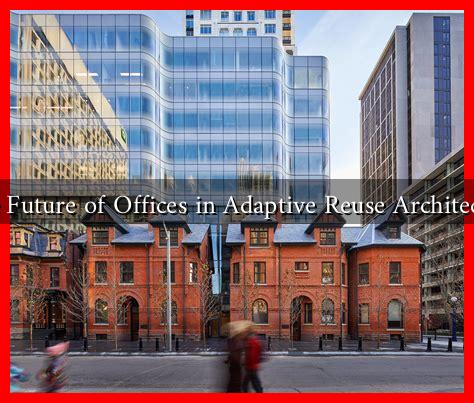-
Table of Contents
Is the Future of Offices in Adaptive Reuse Architecture?
As the world continues to evolve, so too does the concept of the workplace. The COVID-19 pandemic has accelerated changes in how we view office spaces, leading to a significant shift towards remote work and flexible arrangements. In this context, adaptive reuse architecture has emerged as a compelling solution for the future of offices. This article explores the benefits, challenges, and examples of adaptive reuse in office design, providing insights into why this trend may define the future of workspaces.
Understanding Adaptive Reuse Architecture
Adaptive reuse refers to the process of repurposing old buildings for new uses while retaining their historical features. This approach not only preserves cultural heritage but also promotes sustainability by reducing the need for new construction. The benefits of adaptive reuse are manifold:
- Sustainability: By reusing existing structures, adaptive reuse minimizes waste and reduces the carbon footprint associated with new construction.
- Cost-Effectiveness: Renovating an existing building can often be more economical than building new, especially in urban areas where land is scarce.
- Community Revitalization: Transforming old buildings can breathe new life into neighborhoods, attracting businesses and residents alike.
- Unique Aesthetic: Older buildings often possess unique architectural features that can enhance the character of a workspace.
The Shift in Office Needs
The pandemic has fundamentally altered how we perceive office spaces. Many companies are now prioritizing flexibility, collaboration, and employee well-being. As a result, the traditional office model is being re-evaluated. Here are some key trends influencing this shift:
- Remote Work: With many employees working from home, companies are reconsidering their need for large office spaces.
- Flexible Workspaces: The demand for adaptable spaces that can accommodate various work styles is on the rise.
- Health and Safety: Post-pandemic, there is a heightened focus on creating safe and healthy work environments.
Case Studies in Adaptive Reuse
Several successful examples of adaptive reuse in office architecture illustrate the potential of this approach:
- The High Line, New York City: Once an elevated railway, the High Line has been transformed into a public park that has spurred significant economic development in the surrounding area, leading to the conversion of old warehouses into modern office spaces.
- Google’s Chelsea Market, New York City: This former Nabisco factory has been repurposed into a vibrant office space that retains its industrial charm while providing modern amenities.
- The Tate Modern, London: A former power station, the Tate Modern is now a world-renowned art museum that showcases how adaptive reuse can create cultural landmarks.
Challenges of Adaptive Reuse
While adaptive reuse offers numerous benefits, it is not without its challenges:
- Regulatory Hurdles: Zoning laws and building codes can complicate the renovation process.
- Structural Limitations: Older buildings may require significant modifications to meet modern standards.
- Cost Overruns: Unexpected issues during renovation can lead to increased costs.
The Future Outlook
As businesses continue to adapt to new work models, the demand for innovative office solutions will grow. Adaptive reuse architecture stands out as a viable option that aligns with sustainability goals and the evolving needs of the workforce. According to a report by the Urban Land Institute, adaptive reuse projects are expected to increase by 20% in the next decade, reflecting a growing recognition of their value.
Conclusion
In conclusion, the future of offices may very well lie in adaptive reuse architecture. This approach not only addresses the changing needs of businesses and employees but also promotes sustainability and community revitalization. As we move forward, embracing adaptive reuse could lead to more innovative, flexible, and environmentally friendly workspaces. The examples of successful adaptive reuse projects serve as a testament to the potential of this architectural trend, making it a promising avenue for the future of office design.
For more information on adaptive reuse and its impact on urban development, visit Urban Land Institute.

